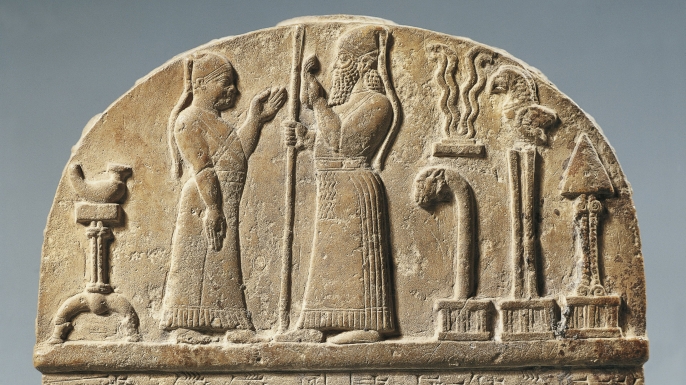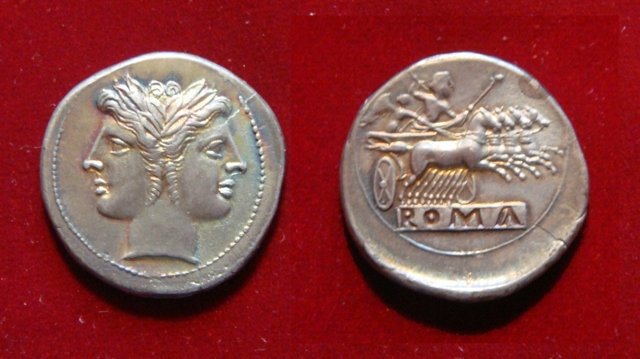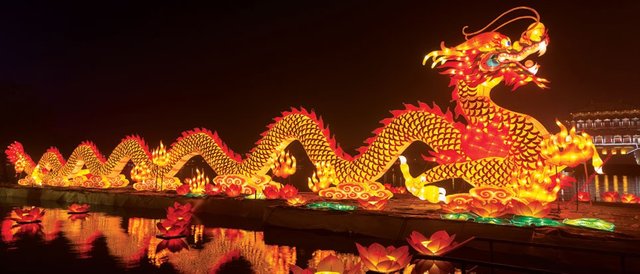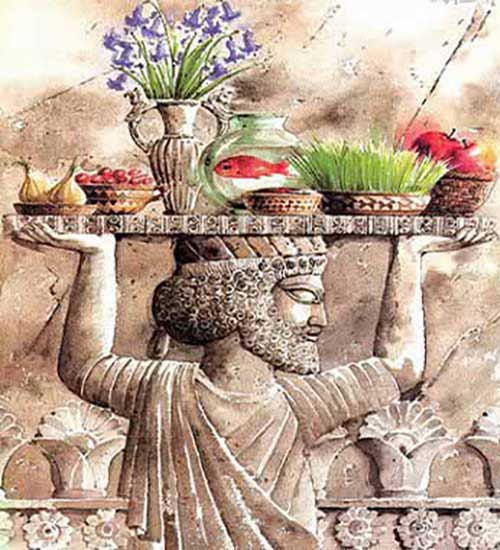EARLY NEW YEAR’S CELEBRATIONS
The earliest recorded festivities in honor of a new year’s arrival date back some 4,000 years to ancient Babylon. For the Babylonians, the first new moon following the vernal equinox—the day in late March with an equal amount of sunlight and darkness—heralded the start of a new year. They marked the occasion with a massive religious festival called Akitu (derived from the Sumerian word for barley, which was cut in the spring) that involved a different ritual on each of its 11 days. In addition to the new year, Atiku celebrated the mythical victory of the Babylonian sky god Marduk over the evil sea goddess Tiamat and served an important political purpose: It was during this time that a new king was crowned or that the current ruler’s divine mandate was symbolically renewed.
Did You Know?
In order to realign the Roman calendar with the sun, Julius Caesar had to add 90 extra days to the year 46 B.C. when he introduced his new Julian calendar.
Throughout antiquity, civilizations around the world developed increasingly sophisticated calendars, typically pinning the first day of the year to an agricultural or astronomical event. In Egypt, for instance, the year began with the annual flooding of the Nile, which coincided with the rising of the star Sirius. The first day of the Chinese new year, meanwhile, occurred with the second new moon after the winter solstice.
JANUARY 1 BECOMES NEW YEAR’S DAY
The early Roman calendar consisted of 10 months and 304 days, with each new year beginning at the vernal equinox; according to tradition, it was created by Romulus, the founder of Rome, in the eighth century B.C. A later king, Numa Pompilius, is credited with adding the months of Januarius and Februarius. Over the centuries, the calendar fell out of sync with the sun, and in 46 B.C. the emperor Julius Caesar decided to solve the problem by consulting with the most prominent astronomers and mathematicians of his time. He introduced the Julian calendar, which closely resembles the more modern Gregorian calendar that most countries around the world use today.
As part of his reform, Caesar instituted January 1 as the first day of the year, partly to honor the month’s namesake: Janus, the Roman god of beginnings, whose two faces allowed him to look back into the past and forward into the future. Romans celebrated by offering sacrifices to Janus, exchanging gifts with one another, decorating their homes with laurel branches and attending raucous parties. In medieval Europe, Christian leaders temporarily replaced January 1 as the first of the year with days carrying more religious significance, such as December 25 (the anniversary of Jesus’ birth) and March 25 (the Feast of the Annunciation); Pope Gregory XIII reestablished January 1 as New Year’s Day in 1582.
NEW YEAR’S TRADITIONS
In many countries, New Year’s celebrations begin on the evening of December 31—New Year’s Eve—and continue into the early hours of January 1. Revelers often enjoy meals and snacks thought to bestow good luck for the coming year. In Spain and several other Spanish-speaking countries, people bolt down a dozen grapes-symbolizing their hopes for the months ahead-right before midnight. In many parts of the world, traditional New Year’s dishes feature legumes, which are thought to resemble coins and herald future financial success; examples include lentils in Italy and black-eyed peas in the southern United States. Because pigs represent progress and prosperity in some cultures, pork appears on the New Year’s Eve table in Cuba, Austria, Hungary, Portugal and other countries. Ring-shaped cakes and pastries, a sign that the year has come full circle, round out the feast in the Netherlands, Mexico, Greece and elsewhere. In Sweden and Norway, meanwhile, rice pudding with an almond hidden inside is served on New Year’s Eve; it is said that whoever finds the nut can expect 12 months of good fortune.
Other customs that are common worldwide include watching fireworks and singing songs to welcome the new year, including the ever-popular “Auld Lang Syne” in many English-speaking countries. The practice of making resolutions for the new year is thought to have first caught on among the ancient Babylonians, who made promises in order to earn the favor of the gods and start the year off on the right foot. (They would reportedly vow to pay off debts and return borrowed farm equipment.)
In the United States, the most iconic New Year’s tradition is the dropping of a giant ball in New York City’s Times Square at the stroke of midnight. Millions of people around the world watch the event, which has taken place almost every year since 1907. Over time, the ball itself has ballooned from a 700-pound iron-and-wood orb to a brightly patterned sphere 12 feet in diameter and weighing in at nearly 12,000 pounds. Various towns and cities across America have developed their own versions of the Times Square ritual, organizing public drops of items ranging from pickles (Dillsburg, Pennsylvania) to possums (Tallapoosa, Georgia) at midnight on New Year’s Eve.
5 Ancient New Year’s Celebrations
Babylonian Akitu

Following the first new moon after the vernal equinox in late March, the Babylonians of ancient Mesopotamia would honor the rebirth of the natural world with a multi-day festival called Akitu. This early New Year’s celebration dates back to around 2000 B.C., and is believed to have been deeply intertwined with religion and mythology. During the Akitu, statues of the gods were paraded through the city streets, and rites were enacted to symbolize their victory over the forces of chaos. Through these rituals the Babylonians believed the world was symbolically cleansed and recreated by the gods in preparation for the new year and the return of spring.
One fascinating aspect of the Akitu involved a kind of ritual humiliation endured by the Babylonian king. This peculiar tradition saw the king brought before a statue of the god Marduk, stripped of his royal regalia and forced to swear that he had led the city with honor. A high priest would then slap the monarch and drag him by his ears in the hope of making him cry. If royal tears were shed, it was seen as a sign that Marduk was satisfied and had symbolically extended the king’s rule. Some historians have since argued that these political elements suggest the Akitu was used by the monarchy as a tool for reaffirming the king’s divine power over his people.
Ancient Roman Celebration of Janus
![list-5-ancient-new-years-celebrations-janus-E.jpeg]
( )
)
The Roman New Year also originally corresponded with the vernal equinox, but years of tampering with the solar calendar eventually saw the holiday established on its more familiar date of January 1. For the Romans, the month of January carried a special significance. Its name was derived from the two-faced deity Janus, the god of change and beginnings. Janus was seen as symbolically looking back at the old and ahead to the new, and this idea became tied to the concept of transition from one year to the next.
Romans would celebrate January 1 by giving offerings to Janus in the hope of gaining good fortune for the new year. This day was seen as setting the stage for the next twelve months, and it was common for friends and neighbors to make a positive start to the year by exchanging well wishes and gifts of figs and honey with one another. According to the poet Ovid, most Romans also chose to work for at least part of New Year’s Day, as idleness was seen as a bad omen for the rest of the year.
Ancient Egyptian Wepet Renpet

Ancient Egyptian culture was closely tied to the Nile River, and it appears their New Year corresponded with its annual flood. According the Roman writer Censorinus, the Egyptian New Year was predicted when Sirius—the brightest star in the night sky—first became visible after a 70-day absence. Better known as a heliacal rising, this phenomenon typically occurred in mid-July just before the annual inundation of the Nile River, which helped ensure that farmlands remained fertile for the coming year. Egyptians celebrated this new beginning with a festival known as Wepet Renpet, which means “opening of the year.” The New Year was seen as a time of rebirth and rejuvenation, and it was honored with feasts and special religious rites.
Not unlike many people today, the Egyptians may have also used this as an excuse for getting a bit tipsy. Recent discoveries at the Temple of Mut show that during the reign of Hatshepsut the first month of the year played host to a “Festival of Drunkenness.” This massive party was tied to the myth of Sekhmet, a war goddess who had planned to kill all of humanity until the sun god Ra tricked her into drinking herself unconscious. In honor of mankind’s salvation, the Egyptians would celebrate with music, sex, revelry and—perhaps most important of all—copious amounts of beer.
Chinese New Year

One of the oldest traditions still celebrated today is Chinese New Year, which is believed to have originated over 3,000 years ago during the Shang Dynasty. The holiday began as a way of celebrating the new beginnings of the spring planting season, but it later became entangled with myth and legend. According to one popular tale, there was once a bloodthirsty creature called Nian—now the Chinese word for “year”—that preyed on villages every New Year. In order to frighten the hungry beast, the villagers took to decorating their homes with red trimmings, burning bamboo and making loud noises. The ruse worked, and the bright colors and lights associated with scaring off Nian eventually became integrated into the celebration.
Festivities traditionally last 15 days and tend to center on the home and the family. People clean their houses to rid them of bad luck, and some repay old debts as a way of settling the previous year’s affairs. In order to encourage an auspicious start to the year they also decorate their doors with paper scrolls and gather with relatives for a feast. Following the invention of gunpowder in the 10th century, the Chinese were also the first to ring in the New Year with fireworks. Since Chinese New Year is still based on a lunar calendar that dates back to the second millennium BC, the holiday typically falls in late January or early February on the second new moon after the winter solstice. Each year is associated with one of 12 zodiacal animals: the rat, ox, tiger, rabbit, dragon, snake, horse, goat, monkey, rooster, dog and pig.
Nowruz

While it is still celebrated in Iran and other parts of the Middle East and Asia, the roots of Nowruz (or “New Day”) reach far back into antiquity. Often called the “Persian New Year,” this 13-day spring festival falls on or around the vernal equinox in March and is believed to have originated in modern day Iran as part of the Zoroastrian religion. Official records of Nowruz did not appear until the 2nd century, but most historians believe its celebration dates back at least as far as the 6th century B.C. and the rule of the Achaemenid Empire. Unlike many other ancient Persian festivals, Nowruz persisted as an important holiday even after Iran’s conquest by Alexander the Great in 333 BC and the rise of Islamic rule in the 7th century A.D.
Ancient observances of Nowruz focused on the rebirth that accompanied the return of spring. Monarchs would use the holiday to host lavish banquets, dispense gifts and hold audiences with their subjects. Other traditions included feasts, exchanging presents with family members and neighbors, lighting bonfires, dyeing eggs and sprinkling water to symbolize creation. One unique ritual that arose around the 10th century involved electing a “Nowruzian Ruler”: a commoner who would pretend to be king for several days before being “dethroned” near the end of the festival. Nowruz has evolved considerably over time, but many of its ancient traditions—particularly the use of bonfires and colored eggs—remain a part of the modern holiday, which is observed by an estimated 300 million people each year.